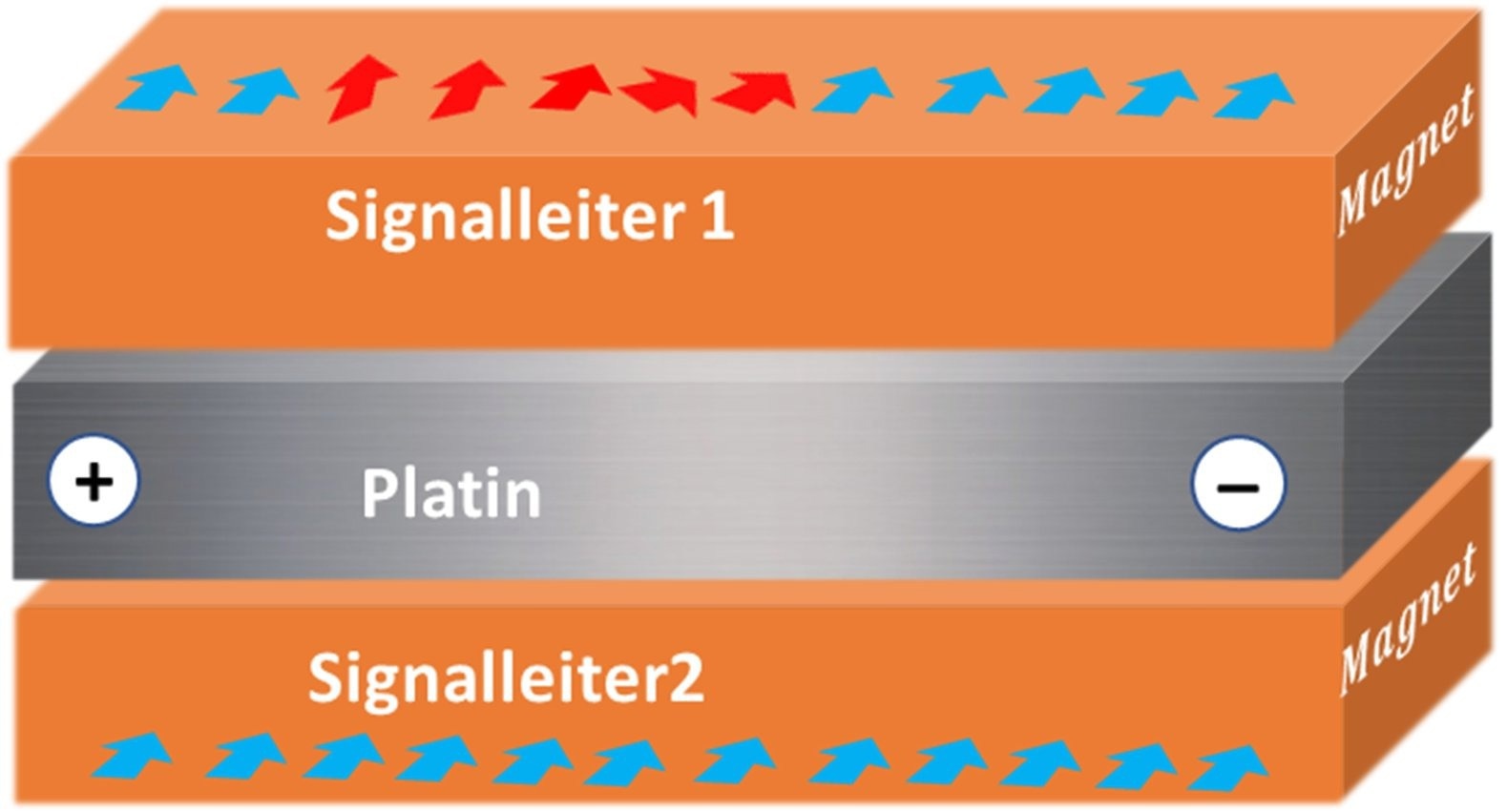Researchers from Martin Luther University Halle-Wittenberg (MLU) and Central South University in China have shown that heat in technical devices can be exploited for computation when certain materials are combined. A great deal of computation and simulation went into their discovery.
 Information signals are encoded as thermal spin waves (red arrows). Logical operations are realized with two magnetic strips (signal conductors) and precisely controlled with current pulses in a spacer (platinum). Image Credit: AG Berakdar
Information signals are encoded as thermal spin waves (red arrows). Logical operations are realized with two magnetic strips (signal conductors) and precisely controlled with current pulses in a spacer (platinum). Image Credit: AG Berakdar
With the help of this innovative method, heat signals can be directed and enhanced for use in data processing that is energy-efficient. Published in the journal Advanced Electronic Materials are the research findings of the team.
The flow of electric current heats electronic equipment. The heat produced is dissipated, and energy is lost.
For decades, people have been looking for ways to re-use this lost energy in electronics.
Dr. Jamal Berakdar, Professor, Physics, Martin Luther University Halle-Wittenberg
This is incredibly tough, he argues, due to the difficulties in correctly directing and managing heat signals. Both, however, are required if heat signals are to be employed to reliably interpret data.
Berakdar worked on comprehensive computations with two colleagues from China's Central South University. Non-conductive magnetic strips are used in conjunction with standard metal spacers instead of common electronic circuits.
Berakdar added, “This unusual combination makes it possible to conduct and amplify heat signals in a controlled manner in order to power logical computing operations and heat diodes.”
However, one downside of the new approach is its speed.
“This method does not produce the kind of computing speeds we see in modern smartphones,” Berakdar continued.
As a result, the new technology is likely to be less relevant for usage in ordinary electronics and more appropriate for next-generation computers used to do energy-saving calculations.
“Our technology can contribute to saving energy in information technology by making good use of surplus heat,” Berakdar concluded.
The German Research Foundation (DFG), the National Natural Science Foundation of China, the Natural Science Foundation of Hunan Province, and the Central South University Innovation-Driven Research Program all contributed to the study’s funding.
Journal Reference:
Wang, X.-G., et al. (2023) PT-Symmetry Enabled Spintronic Thermal Diodes and Logic Gates. Advanced Electronic Materials. doi:10.1002/aelm.202300325